How long is the now?
This post explores the question “How long is now?” through the lenses of neuroscience, physics and philosophy. It reveals that our experience of the present moment—what feels like “now”—is not a fixed point but a stretch of time shaped by perception, attention, and emotion.

Honoring the title of this blog, I want to start with a question that loops through human history like a refrain: how long is now? At first glance, it’s a puzzle of language, a trick of logic—almost like a haiku. But linger with it, and it opens into something more profound. How does the present present itself? Is it a flash, an echo, or a wave we can ride?
In this post, I bring together perspectives from science and philosophy, enriched with a personal lens.
Broadly speaking, ideas of time fall into three camps: the view of physics, the view of philosophy, and the perspective of psychology and neuroscience.
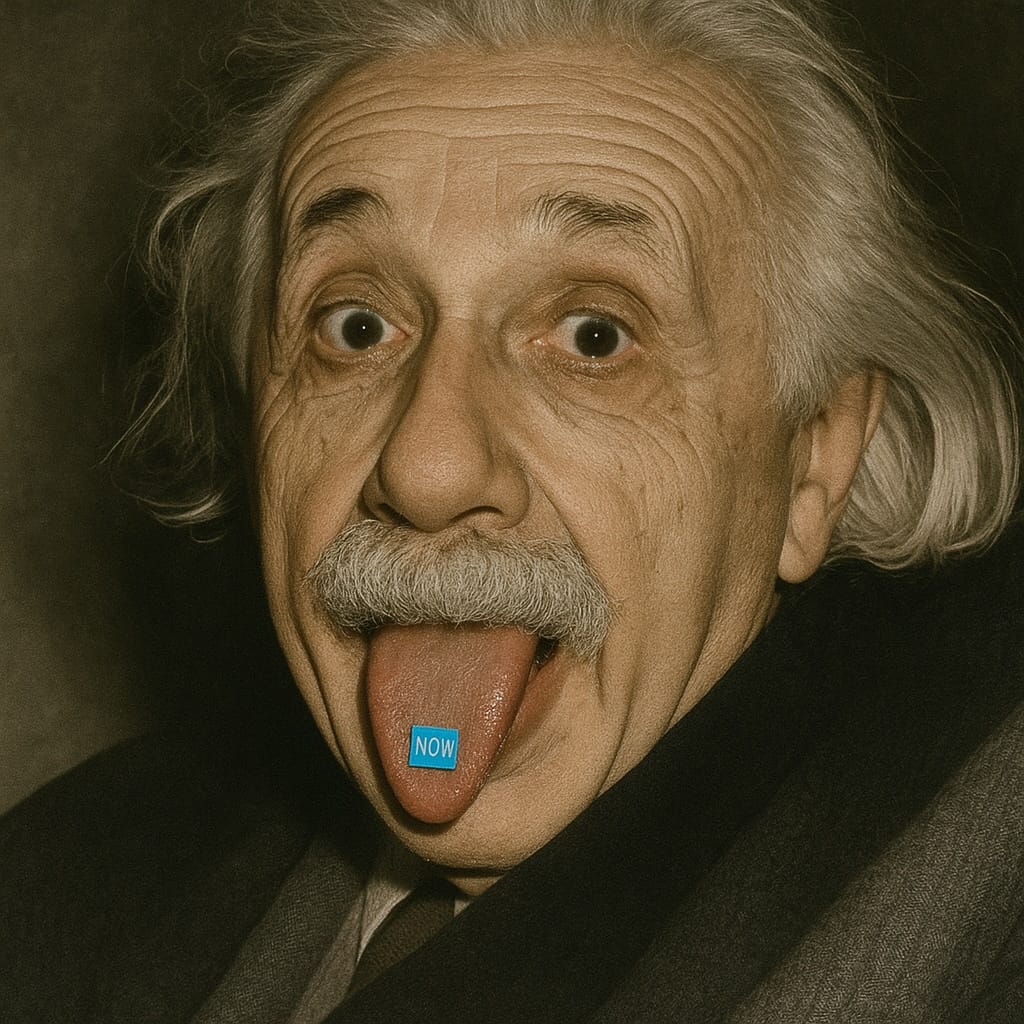
In the universe of Einstein, there is no universal “now.” His theory of relativity showed that time is not absolute but relative—dependent on the observer's state of motion. Events that are simultaneous for one observer may not be for another. This dismantles the idea of a single, shared present and replaces it with a four-dimensional spacetime continuum, where past, present, and future are all part of an interconnected fabric. In this view, time becomes another coordinate, much like space, and 'now' is not a universal truth but a local, observer-dependent slice of the universe.
Some physicists endorse the block universe view, where all points in time are equally real—our experience of the present is simply our passage through this four-dimensional block. Others argue for a dynamic flow, where the present is continually being created.
Yet physics has no instrument for subjectivity. The experience of now—a breath, a heartbeat, a gaze—is absent from equations. And so the scientist meets the limits of the frame, where philosophy begins.
One of the most famous encounters at this boundary was the 1922 debate between Albert Einstein and the French philosopher Henri Bergson. They disagreed not only on how to define time, but on what reality fundamentally is. For Einstein, time was part of a mathematical structure—objective, measurable, and essential to the laws of physics. Bergson countered with durée réelle—real duration—arguing that time as we live it is continuous, fluid, and irreducibly qualitative.
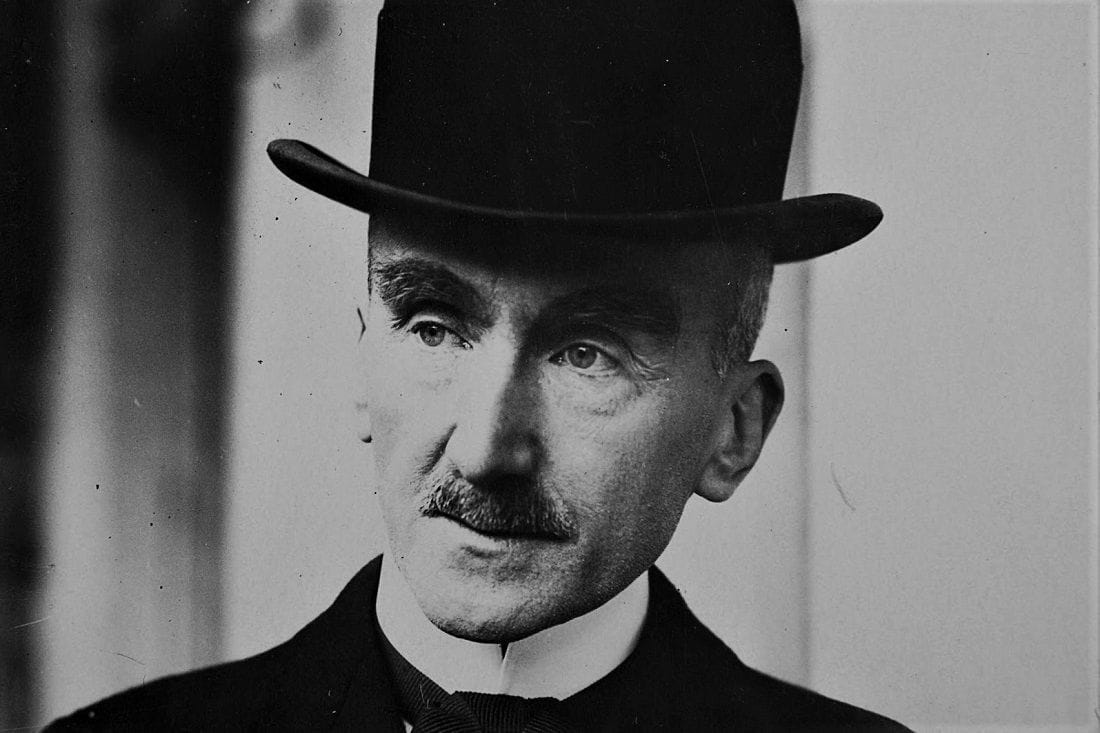
Bergson believed Einstein’s model overlooked the richness of human experience. Where physics dissected time into coordinates, philosophy revealed it as lived and indivisible. Although Einstein’s framework came to dominate science, Bergson’s ideas deeply influenced phenomenology, literature, and art—fields that care not about how time is calculated, but how it is felt.
This tension between measurable time and lived time draws us into a deeper question: what kind of time do we actually live in?
Some say only the present exists. That the past has faded, the future isn’t here yet, and all we have is this moment. This view—Presentism—mirrors how we often feel time in our skin: a string of nows, always rolling forward.
Others say all moments exist at once, whether we’re there to feel them or not. This is Eternalism: the idea that time is a landscape, and we’re just moving through it. Every second—yesterday, today, tomorrow—already there, waiting.
There’s also a middle path: the Growing Block Universe. According to this view, the past and the present are real, but the future is still unfolding. Time is a block that builds itself moment by moment, memory by memory, like a song being composed note by note.
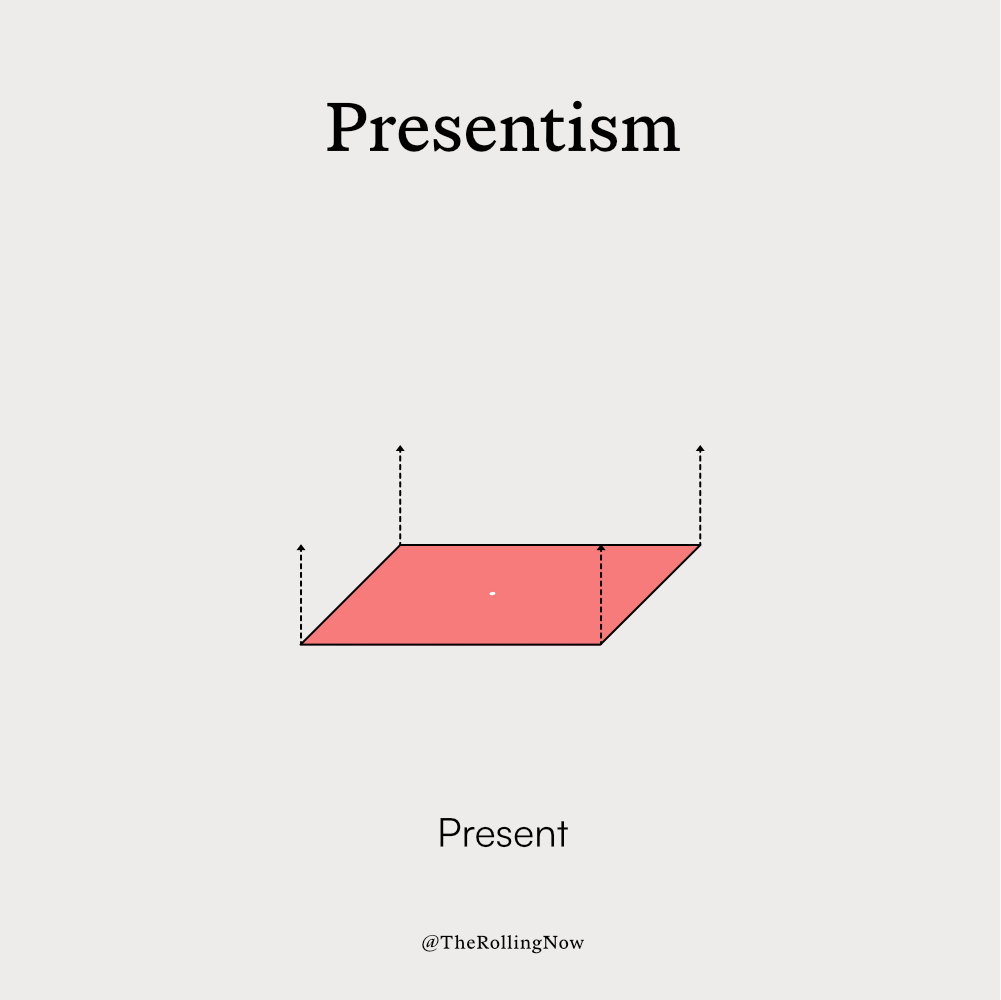

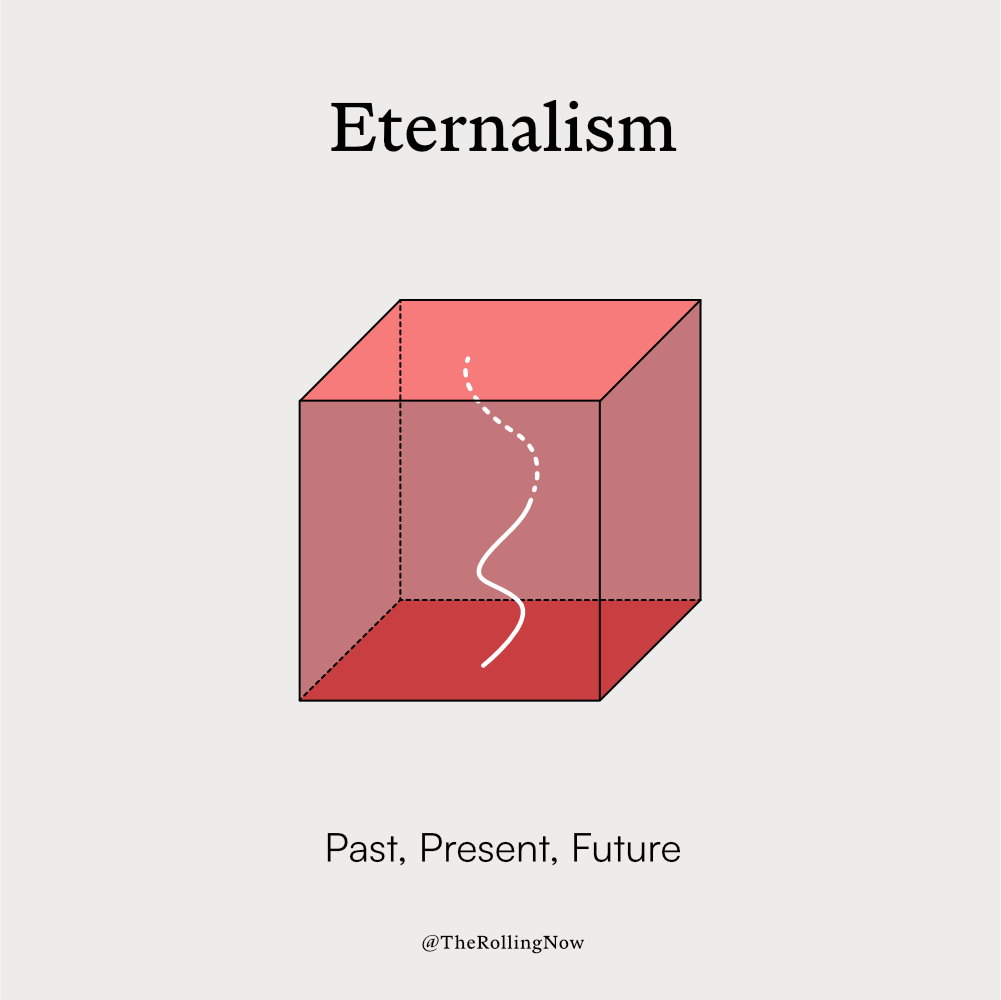
These aren’t just abstract ideas. They echo Einstein’s spacetime and Bergson’s flowing durée. Physics builds the structure. Philosophy asks: what does it mean to stand inside it?
Me personally I like the concept of Bergson’s durée réelle. While digging deeper in this direction, I stumbled upon the writings from Marc Wittmann, a German researcher. Wittmann tackles the questions of how long the now is from the perspective of psychology and neuroscience.
According to Wittmann, our perception of the present moment spans several seconds. This “subjective present” functions as a temporal window in which the brain binds sensory inputs into a unified experience. Without it, we wouldn’t be able to perceive motion, change, or causality—just a disconnected stream of static impressions.
We experience time in perceptual units of roughly 2–3 seconds—brief temporal envelopes that shape how we act, feel, and make sense of the world. These “neural snapshots” define the moving present. Beyond this window, events become reliant on memory, and our awareness shifts from experiencing to recalling.
Internally, our brain estimates time through accumulated neural activity. One theory compares this to tallying internal signals, like counting heartbeats or pulses of attention. However, Wittmann emphasizes that such mechanisms still fail to capture the full richness of the now as we live it.
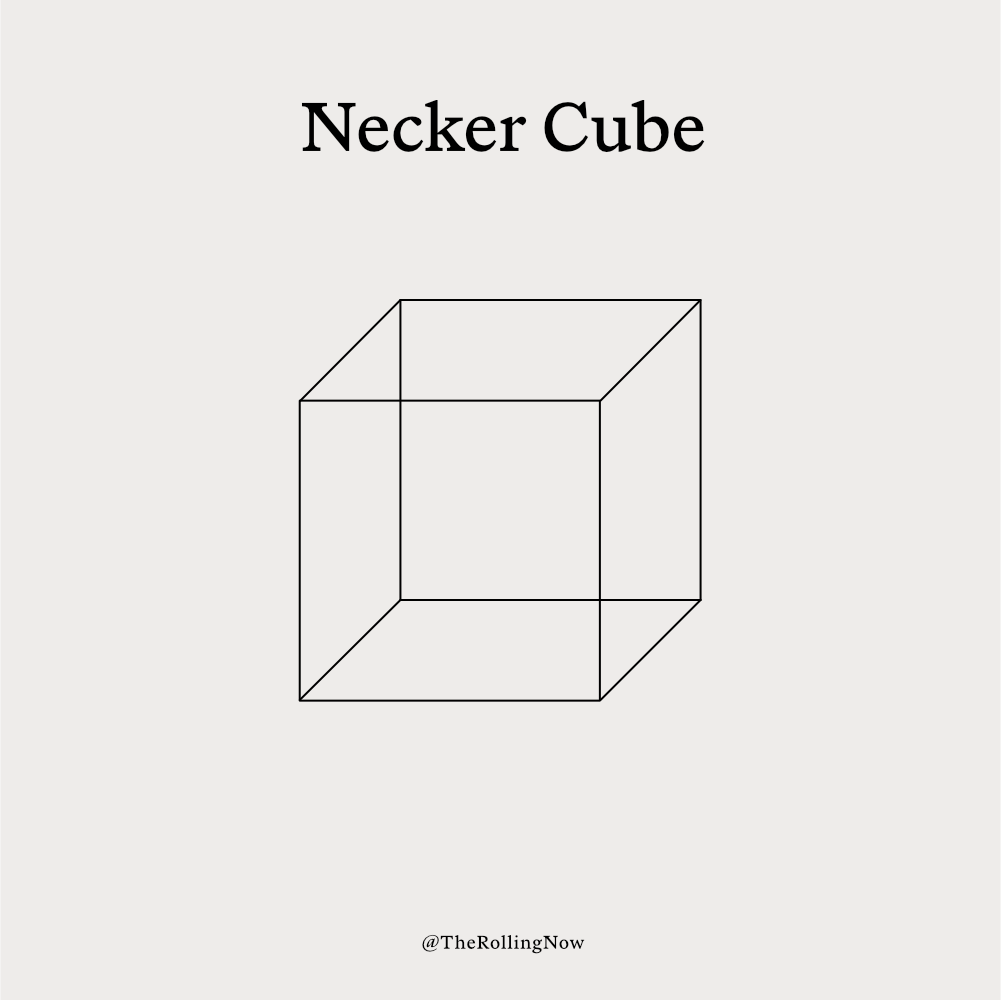
A striking example of how the mind operates within this temporal window is the experience of the Necker Cube—a simple line drawing that the brain can interpret in two different three-dimensional ways. As we gaze at it, our perception spontaneously switches between interpretations, about every few seconds. This rhythmic alternation shows how our brain chunks perception into periods of stability and transition, revealing the temporal scaffolding behind even a single moment of awareness.
Animation by TheRollingNow
Thus, the now is not only a span of time but also a structure of perception, in which consciousness constructs coherence before handing the baton to memory. It is a flow, shaped by biology, cognition, and attention—and yet, irreducibly felt.
Fascinated by this perspective I lately observed myself, trying to identify theses switches of my perception.
How long does one thought last?
Can I dived the length of my emotions by multiples of Now?
Does the change from inhale to exhale mark a new Now?
Can I stretch the Now, by prolonging my focus?
Somehow this leads me to a very beautiful and poetic view of time, whereas Nows are like chords of a melody. Similar to the idea of the Growing Block Universe, do I continually add new Nows to the song of my life?
How does my mood affect the rhythm?
Does being in the now just mean to pitch down the frequency?
In his article on Psychology Today, Wittmann closes with a vivid metaphor: the infamous standing wave at Munich’s Eisbach. Always in motion yet appearing still, the wave mirrors how the mind processes ongoing input into a seemingly stable present. Like a surfer balancing on it, we ride the now—held steady by attention.
To me the surfing metaphor resembles the playback head in a musical composition. Our focus surfs our cognitive stimuli, dropping notes at the given heartbeat.
Animation by TheRollingNow
The topic of Now is definitely something to chew on further. I look forward to dig deeper into Bergson and Wittmann.
For now, I will leave you with Whitney.
Enjoy your rolling now.
